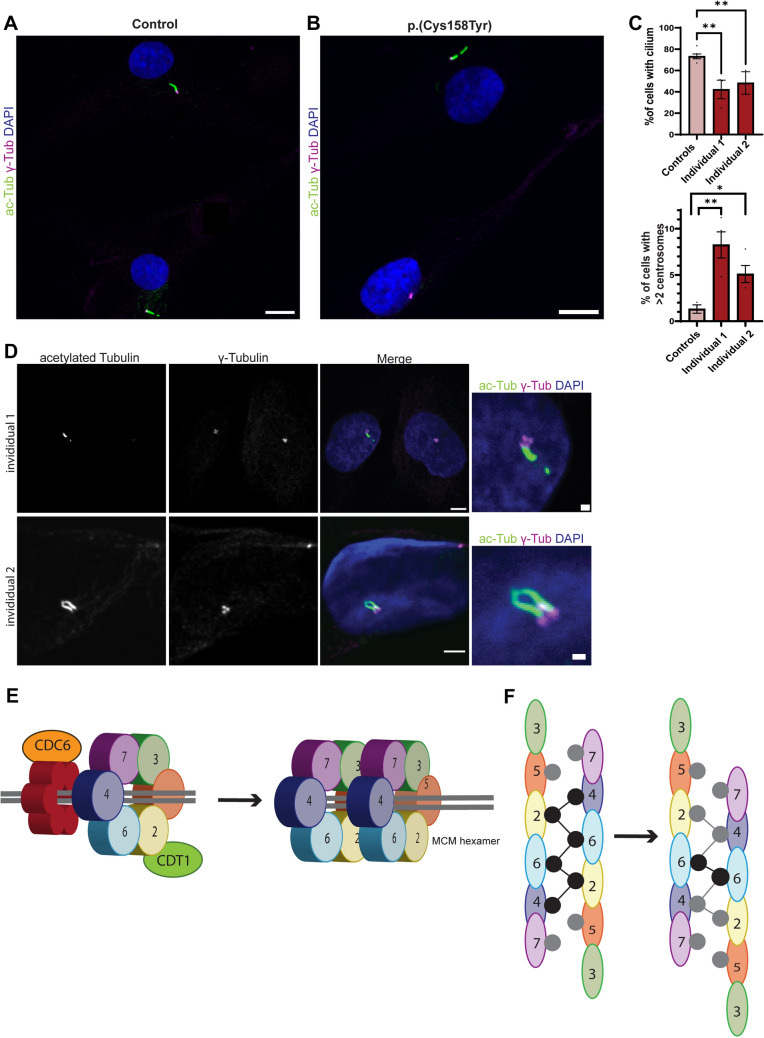Fig. 4.
Zinc finger variant impairs cilia formation and increases the number of centrosomes. A Ciliogenesis was evaluated in fibroblasts from affected individual 1 and 2 and two control fibroblast lines. Cells were starved for 48 h after which the number of cells containing a primary cilium was evaluated by staining with acetylated tubulin (green) and centrosomal marker γ-Tubulin (magenta). Nuclei were co-stained with DAPI. B Quantification of A. At least 100 cells were analyzed per data point (n = 4 experiments, n = 2 controls, One-way ANOVA: **(individual 1) p = 0.0026, **(individual 2) p = 0.0096, mean ± SEM). Scale bars indicate 20 μm. C Percentage of cells with > 2 centrosomes during interphase was quantified. At least 100 nuclei were counted per data point (n = 2 experiments, n = 2 controls, One-way ANOVA: *p = 0.047, **p = 0.0017, mean ± SEM). D Fibroblasts were stained with the cilia marker acetylated Tubulin (green), centrosome marker γ-Tubulin (magenta) after 48 h of starvation. Nuclei were co-stained with DAPI. Examples of fibroblasts derived from individuals 1 and 2 (p.(Cys158Tyr)) with multiple centrosomes and 2 cilia are shown. Scale bars in this figure indicate 5 μm, or 1 μm in insets. E Schematic illustration showing recruitment of the MCM hexamer complexes and CDT1 to DNA replication origins on double stranded DNA. The MCM complex assembles into a pre-replicative complex with the origin recognition complex (ORC), CDC6 and CDT1(left). After the recruitment of two MCM hexamers, these hexamers form a homodimer (right panel). F Schematic illustration of the double MCM hexamer formation by zinc finger domains. The initial double helix (left panel) undergoes a one-subunit shift at the dimer interaction interface to promote conversion to the dCMGE complex. Gray and black circles represent zinc fingers mediating the interaction between the two hexamer complexes. Black circles indicate zinc fingers involved in tight inter-ring interactions, adapted from Lewis et al. (2022)

